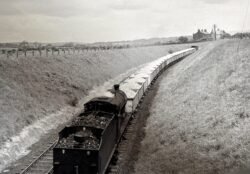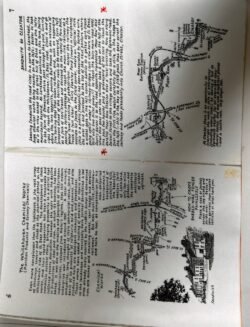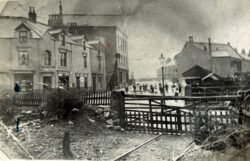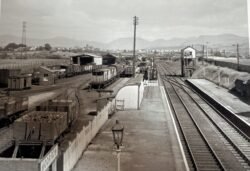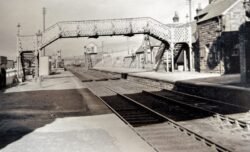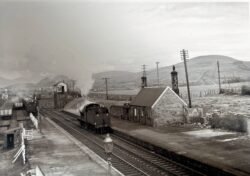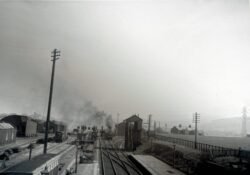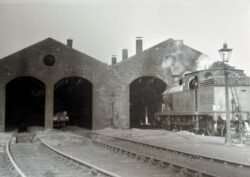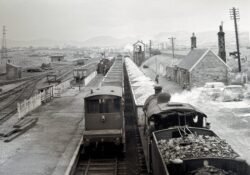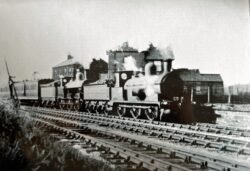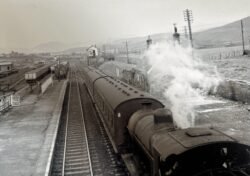Victoria Villa and the railway, a brief history.
We have lived in Victoria Villa, Moor Row since 1992. The house was built by the Whitehaven, Cleator and Egremont Railway Company as accommodations for its senior staff. The house does not feature in the census of 1861, but appears in the one of 1871. The railway itself was opened in 1856. On an original plan of the railway, of which we have a copy, our house is shown as having been built, whilst the neighbouring Alva House is present in outline only.
The railway was built to serve the developing local area of coal pits, iron ore mines and limestone quarries. Both Cleator and Cleator Moor had major iron foundries. (Look out for Foundry Brow in Cleator village if walking east) Further inland was a band of limestone. This led to the development of a major steel industry in nearby Workington. The demand for iron and steel was so great that an intricate network of tracks belonging to rival rail companies developed inland. 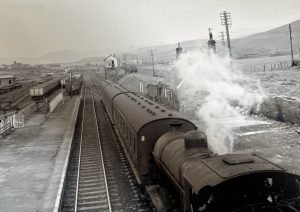 Moor Row became an important railway junction. A line ran westward down towards Whitehaven. To the south another line ran to Egremont and Sellafield. Eastwards lay Cleator Moor, Frizington and Rowrah, before reaching the Workington to Cockermouth route. To the north another line ran to Workington. Moor Row was the junction for all these routes. An engine shed and locomotive and wagon works were all located here. There were some passenger services, but many of these were short lived, and always secondary to the mineral traffic. All passenger services on the network had ceased by the 1930’s.
Moor Row became an important railway junction. A line ran westward down towards Whitehaven. To the south another line ran to Egremont and Sellafield. Eastwards lay Cleator Moor, Frizington and Rowrah, before reaching the Workington to Cockermouth route. To the north another line ran to Workington. Moor Row was the junction for all these routes. An engine shed and locomotive and wagon works were all located here. There were some passenger services, but many of these were short lived, and always secondary to the mineral traffic. All passenger services on the network had ceased by the 1930’s.
The initial occupants of 1 Victoria Villa were the Russell family. John Russell was described as the Railway Traffic Manager. By the time of the 1881 census the Rose family had moved in. Edwin Rose was the Divisional Locomotive Superintendent based in Moor Row. He had the responsibility for maintaining all the locomotives and rolling stock, as well as completing the extensive rebuilding of many of the engines. Edwin and his wife Margaret had five sons and two daughters. Two of his sons became apprentice engineers at Moor Row under their father, and one of the daughters was a teacher in the village school for many years. Edwin died in 1924, aged 82.
Originally Victoria Villa was two properties. In the other half of the property lived the Railway Superintendent and latterly Permeant Way Inspectors. In 1966 British Railways sold the properties.
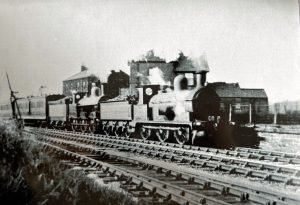 The railway network was one of the most profitable in the United Kingdom for a few brief years in the 1870/80’s. Gradually though the mineral reserves were running out. The First World War provided an upturn in traffic as all the foundries and steel works were running at virtually full capacity. After the war the gradual decline continued, more pits and mines closed, followed by the railways. The Second World War did little to halt the decline. The final iron mine closed in 1980, and with it the final trains through Moor Row.
The railway network was one of the most profitable in the United Kingdom for a few brief years in the 1870/80’s. Gradually though the mineral reserves were running out. The First World War provided an upturn in traffic as all the foundries and steel works were running at virtually full capacity. After the war the gradual decline continued, more pits and mines closed, followed by the railways. The Second World War did little to halt the decline. The final iron mine closed in 1980, and with it the final trains through Moor Row.
Nowadays little remains of the railway. A solitary platform marks the site of Moor Row station. Cyclists on the Sea to Sea Cycle Route, (C2C) will see platform remains at Cleator Moor, Parkside (Frizington), Yeathouse and Winder, along with various over-bridges and abutments. The tracks were not lifted for several years, but by 1994 Sustrans had developed the former trackbed into the C2C route which runs for 140 miles from Whitehaven to Sunderland.
You can download this brief history of Victoria Villa and the Railway here.
Photos are courtesy of Cumbrian Railways Association.
